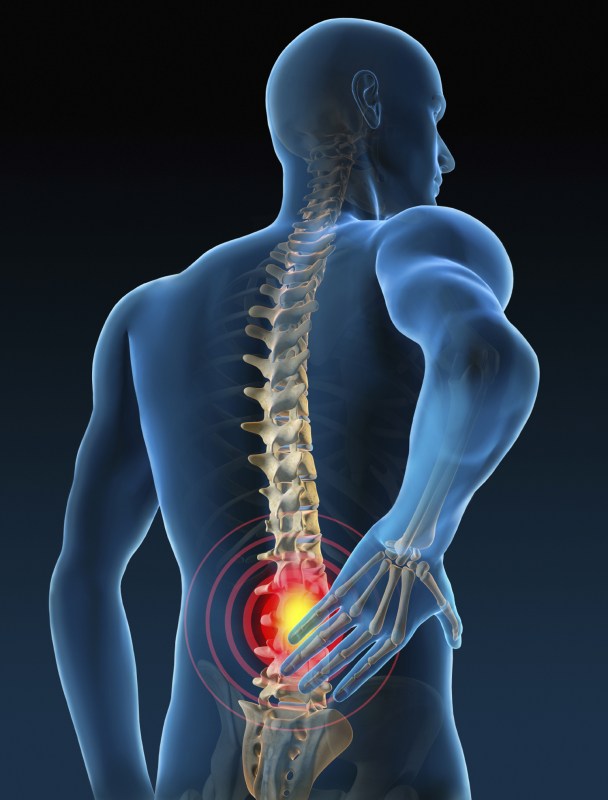
(iStock image)
Spine Center program tracking medical management, surgery outcomes
Let’s say you are in pain, such that you can neither work nor play to your fullest. The problem is in your spine, and your treatment options are medical management or surgery. Which do you choose?
Financially speaking, it’s a choice between costly and very costly. But you soon find that you have no clear basis from which to determine the relative value of the two prospective treatments.
This type of conundrum bedevils health care policy and health care decision-making in general; patients, providers and payers frequently lack the information needed to gauge the comparative effectiveness and value of treatment options.
Neurosurgeons and orthopaedic surgeons are particularly under pressure to justify the risk and cost of surgical interventions for back and neck problems.
Addressing this issue full-on, the Vanderbilt Comprehensive Spine Center has hired three full-time staff to conduct ongoing clinical outcomes and cost data gathering on all of the center’s surgical patients as well as a random sample of the center’s patients who choose medical management for structural problems that might otherwise be treated with surgery.
Plans are now being developed to use the results in health services contracting, marketing, practice improvement and shared health care decision making by doctors and patients.
According to one of the faculty members who launched the program, neurosurgeon Matthew McGirt, M.D., no other spine center in the country has a remotely comparable program of routine outcomes measurement.
“What the health care system has is billing data, which gets used as a proxy for outcomes. What’s missing is patient-centered effectiveness data, and you can’t define value without it,” McGirt said.
“Integrating patient-centered outcomes collection into our standard of care, we as spine surgeons are learning which treatments are most effective and safe in our hands, for our patients, in the Vanderbilt setting. We feel that this real-world evidence feedback loop empowers the patient and the surgeon to make the right decisions.”
Many clinical programs at Vanderbilt track their hospital readmission rates as a measure of quality and cost, but lack information about readmissions to outside hospitals. The Spine Center’s database is rare for capturing all patient-reported hospital readmissions and health care services, allowing a more comprehensive assessment of quality, cost and value.
The quality-adjusted life year is a standardized measure of disease burden that includes the quality and quantity of life lived. For narrowing of the spinal canal (lumbar stenosis), the average one-year direct health care cost for patients receiving surgery at the center was $14,264 (the Medicare fee schedule is used for these cost calculations), while the average direct cost for patients who chose medical management was $8,992.
But here’s the kicker: the direct and indirect cost of this surgery per quality-adjusted life year gained was $33,700, while the comparable cost for medical management was $95,500. (Indirect costs include lost wages of patients and their caregivers.)
For vertebra displacement (spondylolisthesis), the surgical cost per quality-adjusted life year gained was $42,854, while the comparable cost for medical management was $146,033. The actual direct health care costs were $25,251 and $9,191, respectively.
At the start of care, again at three months, and again at 12 months, surveyors at the center review parts of medical records and question patients by telephone. The standardized patient survey instruments employed include the Visual Analogue Pain Scale, the Oswestry (low back) Disability Index/Neck Disability Index, SF-12 (health status), EQ-5D (health status) and the Zung Self-Rating Depression Scale.
Additional data gathered at the start of care include codes detailing diagnoses, imaging results and select aspects of the medical history. At three months, additional data gathered include hospital length of stay and complications. At both three months and 12 months, additional data gathered include patient satisfaction, return to work and total direct and indirect costs for care. At 12 months, medical resource utilization is also documented.
“In the spine outcomes literature most reports are lucky to capture 50 percent of patients. We are currently collecting 83 percent follow-up on our patients. Complete surgical outcomes data differentiates our group. In addition to research and educational value, this information will also allow us to select the optimal care option for each individual patient,” said Spine Center Director Dan Spengler, M.D.
The program uses REDCap, a Web-based clinical research data capture tool developed at Vanderbilt and used worldwide.













